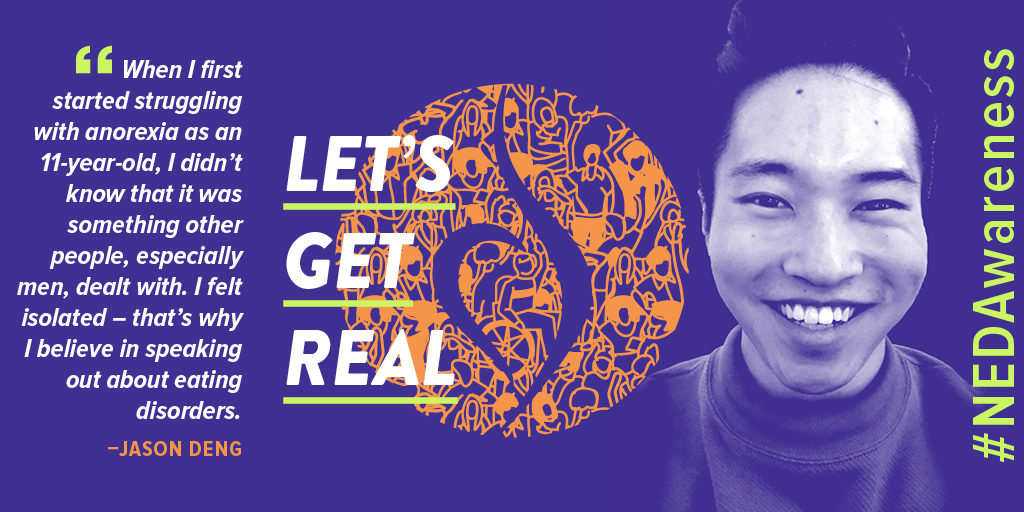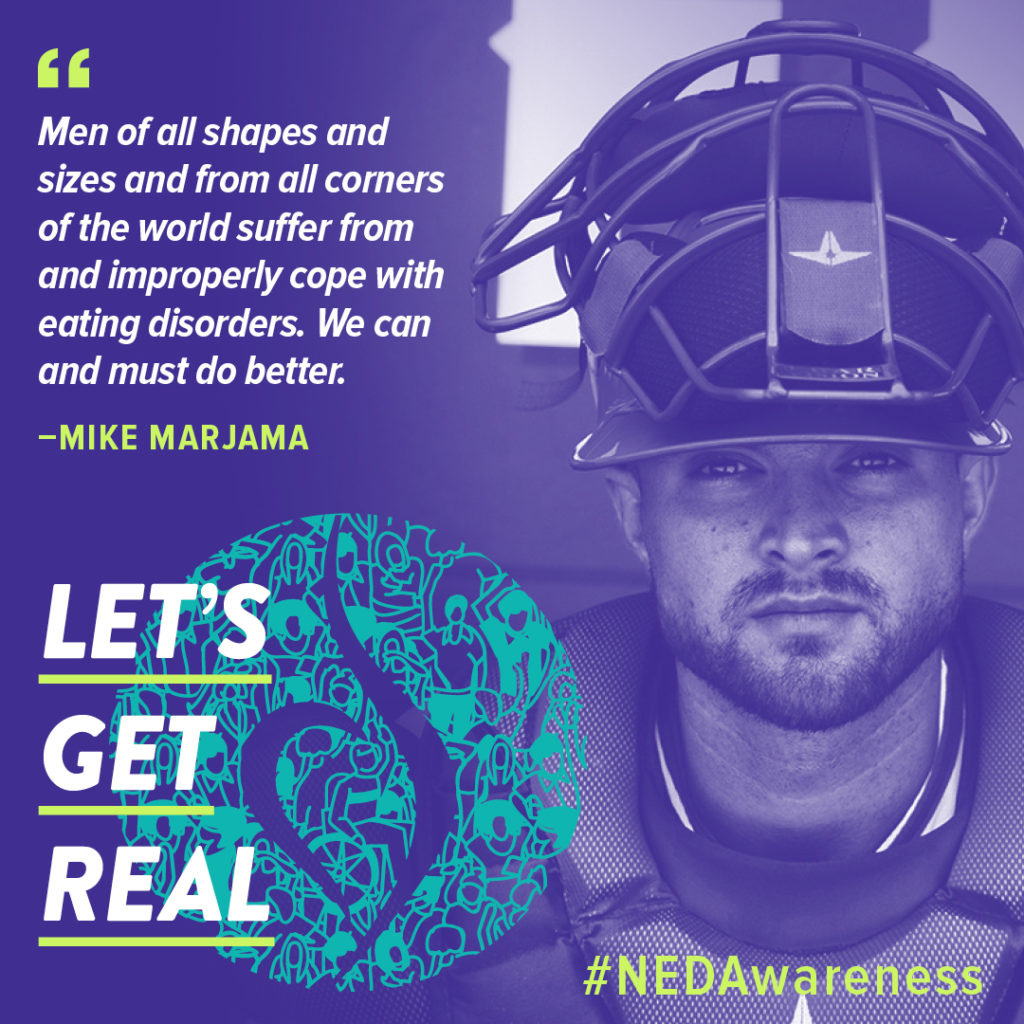The literal reality about eating disorders is that they affect everyone–regardless of age, gender, race, size or socioeconomic status. National Eating Disorders Awareness Week kicks-off today Feb. 26th thru Mar. 4th with the theme Let’s Get Real: Get Screened…Get Real…Get Help…Get Healthy! Start the conversations.

National Eating Disorders Awareness Week is brought to you by The National Eating Disorders Association (NEDA). For 2018, NEDA urges everyone to start having more honest conversations about food, exercise and body image issues.
This year’s theme provides a platform for untold stories to be heard; promotes healthy relationships with food and our bodies; and offers hope and help to those who need it.
WARNING SIGNS & SYMPTOMS OF AN EATING DISORDER
The literal reality about Eating Disorders such as bulimia, binge eating disorder and anorexia are serious illnesses that involve extreme emotions, attitudes, and behaviors surrounding food, exercise and body image. Though not diagnostic, the above video outlines the basic warning signs and symptoms and will give you an idea of what to look out for. To take a confidential online screening, visit nationaleatingdisorders.org/screening.

From New York’s Empire State Building in the east to Los Angeles International Airport’s 100-foot, glass pylons in the west — dozens of iconic landmarks in cities across the country in more than 35 states — will be lit in the signature blue and green colors of NEDA to put a spotlight on the seriousness of eating disorders. For a list of locations in your area click here.

BY THE NUMBERS
● 35% of “normal dieters” progress to disordered eating. Of those, 20-25% progress to partial or full-syndrome eating disorders.
• Males represent 25% of individuals with anorexia and bulimia, and 36% of those with binge eating disorder.
• The prevalence of eating disorders is similar among Non-Hispanic whites, Hispanics, African-Americans, and Asians in the United States, however people of color are significantly less likely to receive help for their eating issues.
• One study found that 35% of female and 10% of male college athletes were at risk for anorexia nervosa and 58% of female and 38% of male college athletes were at risk for bulimia nervosa.
● Most individuals with eating disorders also meet the criteria for other psychiatric disorders, such as OCD, depression and anxiety).
● 38 to 44% of women with bulimia also suffer from PTSD, frequently a result of abuse, sexual harassment and other life-altering trauma.
● 40% of overweight girls and 37% of overweight boys are teased about their weight by peers and family members. As many as 65% of people with eating disorders say bullying contributed to their condition.
● Up to 35% of individuals with a history of substance abuse have also had an eating disorder, a rate 11 times higher than the general population.
● 46% of 9-to 11-year-olds and 82% of their families are “sometimes” or “very often” on diets.
● Over one-half of teenage girls and nearly one-third of teenage boys use unhealthy weight control behaviors such as skipping meals, fasting, smoking cigarettes, vomiting and taking laxatives. .
NEDA AWARENESS WEEK EVENTS
During NED Awareness Week, NEDA will share videos, host Twitter chats and curate user-generated content, which will address a variety of issues surrounding body image, food issues, exercise and eating disorders. You can follow #NEDAwareness for the latest news and updates.

Let’s get real this week and every week throughout the year. Continue The conversations we start today and if you or someone you know, or recognize to have signs of an eating disorder call the toll-free, confidential helpline at 1-800-931-2237 to seek help – Socially Sparked® for Healthy Lives! Tweet @ sosparkednews.



